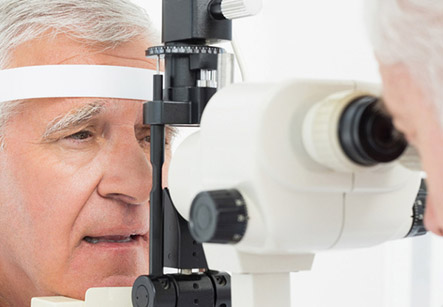Central Retinal Vascular Occlusion
Introduction
Central retinal artery occlusion is a condition in which there is sudden painless and profound loss of vision due to blockage of the arterial blood supply to the eye. Retinal occlusive arterial disease is very rare condition and has very poor prognosis.
CRAO can occur due to various reasons which are as follows:
• Thrombosis or clot formation in the vessel
• Vasospasm (collapse of the blood vessel)
• Arteritis (which means inflammation of the walls of the supplying arteries)
• Embolism in patients of giant cell arteritis or atherosclerosis
• Thromboembolic diseases such as deep venous thrombosis, pulmonary embolism.
Iranian scientists have moved to the forefront in embryonic stem cell research, according to a recent joint study by Harvard University and the Massachusetts Institute of Technology

Poor eye circulation is categorized with ocular ischemic syndrome such as in central retinal vein occlusion or diabetic retinopathy (retinal hemorrhage or retinal bleeding in people with diabetes).
Stem cells which originate outside the eye also may be used for repairing eye damage and restoring vision loss.
Stem cell therapy is fast emerging modality for various chronic degenerative diseases. Ability of stem cells to repair damaged tissue and regenerate lost cells makes stem cell therapy an attractive treatment options. Stem cell therapy has been evaluated in central retinal artery occlusion and initial results are encouraging.
There are many different types of stem cells. Some of these stem cells are very useful within stem cell treatment, whereas others are less useful or potentially harmful.
Treatment of eye diseases by using stem cells utilizes the properties of stem cells and/or their products to protect neurons (stem cells are neuroprotective) and regenerate the damaged cells in the eye. The eyes are particularly well suited for transplant therapies because they are strategically protected from normal inflammatory immune responses. This protected status of the eyes is referred to as ‘immune privilege’. This is present only for the eye and the brain. This environment in the eye is created by a physical blood-tissue barrier which prevents the influx of inflammatory immune cells, and also by active immunological mechanisms that blunt the immune response in these sites to make it less harmful.
An important type of stem cells is adult or autologous stem cells. These cells are a type of stem cells derived from the patient himself.
• adult stem cells
• Found throughout the body of every human, mostly within the bone marrow.
• Human body uses these stem cells to replenish blood, which makes them very high in blood forming stem cells.
• There is a mix of hematopoietic stem cells and Mesenchymal stem cells which makes them suitable for any type of treatment.
The stem cells best suited for this therapy may be harvested from the eye or from elsewhere in the body. There are different types of stem cells present in the eye which are as follows:
• Limbal stem cells (which support the cornea and protect the eye from wear and tear).
• Conjunctival stem cells (which continuously bathe the eye in tears and mucous).
Both these cells can be grafted in existing tissue to repair damage. Retinal stem cells are located at the retinal ciliary margin and also able to make photoreceptors.
These stem cells can be genetically engineered to secrete continuously which make huge amounts of beneficial factors as mentioned above. This concept can be well adapted for treating ophthalmic diseases as many causes of such diseases may be related to an eye environment lacking protective factors.
Stem cells which originate outside the eye also may be used for repairing eye damage and restoring vision loss. They include adult stem cells (bone marrow stem cells, mesenchymal stem cells, neural stem cells and embryonic stem cells). These treatments are under research for various diseases of the eye, including CRAO. Thus, the debility and suffering caused by CRAO in its patients can be reduced by stem cell therapy